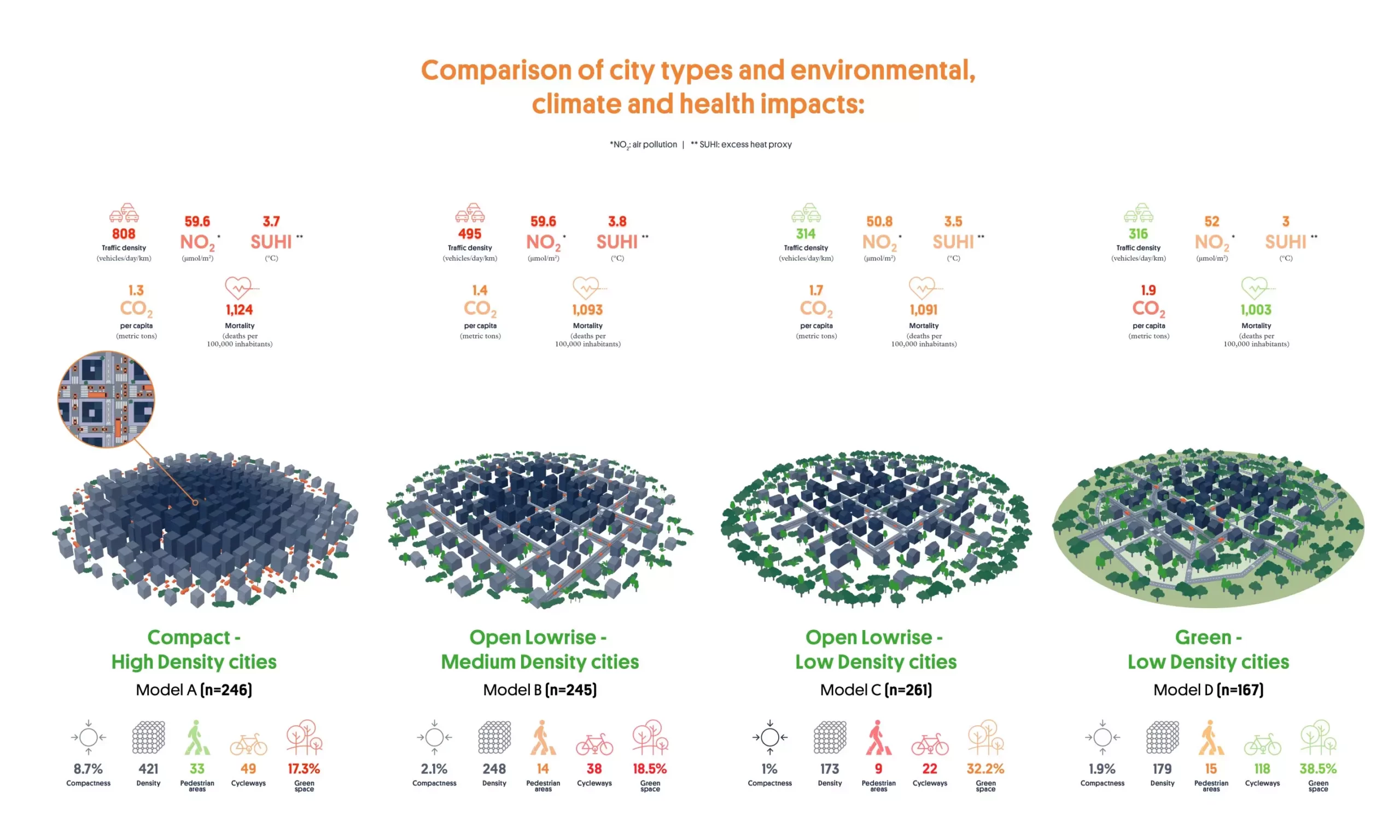Europe is home to a diverse range of urban configurations that significantly impact human health, environmental quality, and carbon footprint. A study conducted by the Barcelona Institute for Global Health (ISGlobal) delved into the analysis of 919 European cities to identify four basic urban typologies prevalent on the continent. These typologies include compact-high density cities, open lowrise-medium density cities, open lowrise-low density cities, and green-low density cities. Each urban configuration has its own set of advantages and challenges, ultimately influencing the well-being of its residents and the planet as a whole.
Compact-high density cities, such as Barcelona, Milan, Paris, and Basel, are characterized by small surface area sizes, high population density, and limited green space. Despite having compact infrastructures that promote short-distance mobility through dense public transport networks and pedestrian-friendly spaces, these cities face issues such as high mortality rates, poor air quality, and a strong urban heat island effect. On the positive side, compact cities exhibit lower greenhouse gas emissions per capita due to their energy-efficient designs.
Cities like Brussels, Dublin, and Leipzig fall under the category of open lowrise-medium density cities, which have smaller surface area sizes and relatively higher population densities than low-density cities. These urban areas strike a balance between pedestrian areas, cycleways, and green spaces, making them more sustainable than compact-high density cities. However, they still experience moderate levels of motorized traffic flows that contribute to air pollution and urban heat island effects, leading to higher mortality rates compared to low-density cities.
Open lowrise-low density cities, including Pisa, Oviedo, and Toulouse, occupy larger surface areas and have lower population densities than their medium-density counterparts. These cities lack pedestrian areas and cycleways but offer moderate to high availability of green natural spaces on the outskirts. While they may provide a sense of spaciousness and tranquility, residents in these cities often face challenges related to longer commutes and lower energy efficiency, resulting in higher carbon footprints per capita.
Green-Low Density Cities
Green-low density cities like Helsinki, Rennes, Aarhus, and Stockholm are characterized by large surface areas with low population densities. These sprawled cities prioritize green spaces, cycleways, and natural areas integrated throughout the urban landscape. Despite offering lower levels of air pollution and urban heat island effects, these cities have the highest carbon footprints per capita due to their reliance on motorized transportation and extensive land use. The trade-off between environmental quality and energy efficiency remains a key consideration for policymakers in green-low density cities.
Implications for Health and Sustainability
The study highlighted the varying impacts of different urban typologies on human health, environmental quality, and carbon footprint across European cities. While compact-high density cities promote energy efficiency and short-distance mobility, they suffer from poor air quality and limited green spaces, leading to higher mortality rates. On the other hand, low-density cities prioritize environmental quality but struggle with longer commutes and higher carbon footprints. Finding a balance between compactness, green spaces, and sustainable transportation is crucial for developing healthier and more sustainable cities in the future.
As cities continue to expand and evolve, it is essential to consider the implications of urban typologies on the well-being of residents and the environment. While compact cities offer efficiency and accessibility, they must address challenges related to air pollution and congestion. Conversely, low-density cities need to prioritize sustainable transportation and energy-efficient practices to reduce their carbon footprint. By leveraging innovative solutions and designing city-specific strategies, urban areas can strive towards a model that prioritizes health, environmental quality, and sustainability for all.


Leave a Reply